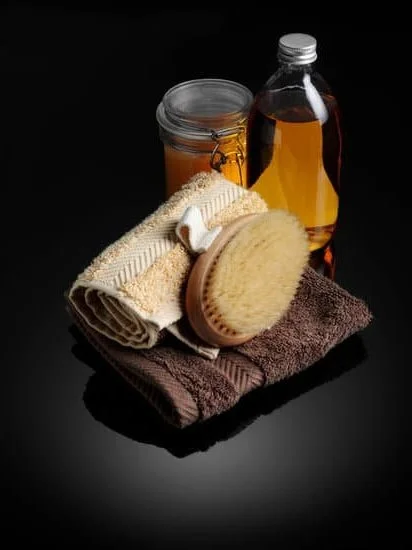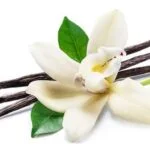Tea Tree essential oil aromatherapy is a natural and holistic approach to wellness that has gained popularity in recent years. This powerful oil, derived from the leaves of the Melaleuca alternifolia tree native to Australia, has been used for centuries for its medicinal properties.
Tea Tree essential oil is extracted through a meticulous process that preserves its potent therapeutic compounds. Its chemical composition is rich and complex, consisting of over 100 different compounds, each contributing to its unique fragrance and healing properties.
In aromatherapy, Tea Tree essential oil is known for its versatility and wide range of health benefits. It possesses antiseptic, antibacterial, and antifungal properties that make it effective in treating various skin conditions, soothing respiratory issues, and promoting emotional well-being. Additionally, Tea Tree essential oil can be blended with other oils or used in DIY recipes for personalized purposes such as cleaning products or topical applications.
As we delve into this article, we will explore the historical background of Tea Tree essential oil and its usage in aromatherapy. We will also discuss the extraction process and delve into the chemical constituents of this powerful oil.
Furthermore, we will examine the numerous health benefits it offers in terms of skincare, respiratory health, and emotional well-being. Finally, we will provide readers with DIY recipes and blends using Tea Tree essential oil while emphasizing important safety precautions to consider when using this remarkable natural remedy.
Historical Background
Tea Tree essential oil has a rich historical background, dating back to ancient times. Indigenous Australians have been using Tea Tree leaves for their medicinal properties for centuries. The leaves of the Melaleuca alternifolia tree were commonly crushed and applied topically to wounds and skin infections. The antiseptic and healing properties of the leaves were highly valued by Aboriginal communities.
The benefits of Tea Tree essential oil started gaining recognition in the Western world during the 18th century when British explorer Captain James Cook arrived in Australia. He observed Aboriginal people brewing a medicinal tea from the leaves of the Melaleuca alternifolia tree, giving it its common name – Tea Tree.
In the late 19th century, Australian chemist Arthur Penfold conducted extensive research on Tea Tree essential oil and its powerful antibacterial properties. This research laid the foundation for further exploration of Tea Tree oil’s potential uses in modern medicine.
Today, Tea Tree essential oil is widely used in aromatherapy due to its numerous therapeutic benefits. Its popularity can be attributed to its antimicrobial, antiseptic, anti-inflammatory, and antifungal properties. These qualities make it an invaluable addition to various skincare products, cleaning agents, and holistic treatment options.
The historical usage of Tea Tree essential oil in traditional medicine combined with scientific advancements has solidified its reputation as one of nature’s most versatile oils. Its rich history continues to contribute to our understanding and appreciation of this remarkable essential oil’s potential uses and benefits.
| Year | Event |
|---|---|
| 18th century | Captain James Cook observes indigenous Australians using Tea Tree leaves |
| Late 19th century | Arthur Penfold conducts research on Tea Tree essential oil |
| Present | Tea Tree essential oil widely used in aromatherapy and various applications |
Extraction Process
Tea Tree essential oil is extracted from the leaves of the Melaleuca alternifolia plant, which is native to Australia. There are mainly two methods used for extracting Tea Tree essential oil: steam distillation and cold pressing.
Steam Distillation
This is the most common method of extraction for essential oils, including Tea Tree essential oil. In this process, steam is passed through the plant material, causing the volatile compounds to vaporize. The vaporized oil then goes through a condensation process where it turns back into a liquid state and is collected. Steam distillation allows for the separation of the volatile components from the water content, resulting in highly concentrated essential oil.
Cold Pressing
Cold pressing, also known as expression or mechanical extraction, is another method used to obtain Tea Tree essential oil. This method involves crushing or grinding the plant material to release its natural oils. The resulting mixture of oil and water undergoes a separation process to remove impurities and solid residues, leaving behind pure essential oil.
Both extraction methods are highly valued because they preserve and capture the beneficial properties of Tea Tree essential oil without compromising its integrity. These methods ensure that all the potent chemical constituents are retained in their natural form, providing maximum therapeutic benefits.
The quality of the extracted Tea Tree essential oil depends on several factors including the species of Melaleuca alternifolia plant used, geographical location, climate conditions, harvesting techniques, and processing methods. To ensure high-quality tea tree oil with optimum therapeutic properties, it is crucial to source it from reputable manufacturers who follow strict quality control standards throughout the extraction process.
Tea Tree essential oil’s extraction process contributes to its popularity and widespread use in aromatherapy due to its incredible healing properties and versatility in addressing various health concerns.
Chemical Composition
Tea Tree essential oil is derived from the leaves of the Melaleuca alternifolia tree, a small tree native to Australia. Its chemical composition is rich and complex, with over 100 different compounds identified. The main active components in Tea Tree essential oil include terpinen-4-ol, gamma-terpinene, and alpha-terpinene. These compounds contribute to its distinct aroma and powerful therapeutic properties.
Terpinen-4-ol is the most abundant compound in Tea Tree essential oil and is responsible for many of its antimicrobial properties. It has been found to exhibit strong antiviral, antifungal, and antibacterial activities. This makes Tea Tree essential oil an effective natural remedy for a wide range of infections and skin conditions.
Another important constituent of Tea Tree essential oil is gamma-terpinene. It possesses antioxidant properties that help protect cells against damage caused by free radicals. Additionally, gamma-terpinene has shown potential anti-inflammatory effects, which can be beneficial for reducing inflammation and swelling in various parts of the body.
Alpha-terpinene is also present in Tea Tree essential oil and contributes to its therapeutic benefits. It has been studied for its potential anticancer properties, as it has demonstrated cytotoxic effects on certain cancer cell lines in laboratory studies. While more research is needed to fully understand its mechanisms of action, alpha-terpinene holds promise as a natural alternative for cancer treatment.
The combination of these chemical constituents gives Tea Tree essential oil its diverse range of therapeutic benefits. Its antimicrobial properties make it a popular choice for treating various skin conditions such as acne, eczema, and fungal infections. Furthermore, the antioxidants present in this oil help improve the appearance of the skin by reducing signs of aging caused by oxidative stress.
In addition to its skincare benefits, Tea Tree essential oil can also support respiratory health by helping to relieve congestion and fight off respiratory infections. Its antimicrobial and anti-inflammatory properties make it a valuable natural remedy for alleviating symptoms of colds, coughs, and sinusitis.
Overall, the chemical composition of Tea Tree essential oil plays a crucial role in its therapeutic effects. The combination of terpinen-4-ol, gamma-terpinene, and alpha-terpinene provides this oil with its antiviral, antifungal, antibacterial, antioxidant, and anti-inflammatory properties. These beneficial compounds make Tea Tree essential oil a versatile tool for promoting overall well-being and addressing various health concerns.
| Chemical Constituent | Therapeutic Benefits |
|---|---|
| Terpinen-4-ol | Antimicrobial (antiviral, antifungal, antibacterial) |
| Gamma-terpinene | Antioxidant and anti-inflammatory |
| Alpha-terpinene | Potential anticancer properties |
Health Benefits
Tea Tree essential oil is known for its powerful health benefits in aromatherapy. This section will delve into the various ways in which Tea Tree essential oil can improve overall well-being and promote healing.
Antiseptic Properties
One of the key health benefits of Tea Tree essential oil is its antiseptic properties. It has been used for centuries to treat wounds, burns, and other skin infections due to its ability to kill bacteria and prevent their growth. When applied topically, Tea Tree essential oil can help cleanse wounds and prevent infection, making it an excellent natural alternative to chemical antiseptics.
Antibacterial Effects
Tea Tree essential oil also possesses strong antibacterial effects. Studies have shown that it can inhibit the growth of various types of bacteria, including those that are resistant to antibiotics. This makes it a valuable asset in fighting bacterial infections, such as acne or folliculitis. Incorporating Tea Tree essential oil into skincare routines or using it as a topical treatment can help alleviate symptoms and promote healing.
Antifungal Agent
In addition to its antiseptic and antibacterial properties, Tea Tree essential oil also exhibits potent antifungal properties. It has been found effective against common fungal infections such as athlete’s foot, nail fungus, and yeast infections. By incorporating Tea Tree essential oil into fungal treatment regimens, individuals may experience relief from itching, burning sensations, and inflammation associated with these conditions.
These health benefits make Tea Tree essential oil a versatile tool in promoting overall wellness and addressing a range of ailments. From promoting wound healing to fighting bacterial and fungal infections, Tea Tree essential oil offers a natural alternative for those seeking a holistic approach to their well-being journey.
Next in this article will be an exploration of how Tea Tree essential oil can be used specifically for skincare purposes.
Skin Care
Tea Tree essential oil is renowned for its incredible benefits in skincare routines. Its powerful antibacterial and anti-inflammatory properties make it a popular choice for treating various skin conditions, including acne, inflammation, and fungal infections. When used topically, Tea Tree oil can help cleanse the skin, reduce redness and irritation, and promote overall skin health.
One of the most well-known uses of Tea Tree essential oil is for acne treatment. Thanks to its antibacterial properties, it can effectively kill the bacteria that cause acne breakouts. It also helps to regulate sebum production, preventing clogged pores and reducing the occurrence of pimples. Tea Tree oil’s anti-inflammatory properties can also soothe inflamed skin and reduce redness associated with acne.
In addition to acne, Tea Tree essential oil is beneficial for other skin conditions as well. It can help with various types of inflammation, such as eczema and psoriasis. Its antimicrobial properties make it effective against fungal infections like athlete’s foot or nail fungus. Tea Tree oil can be used on its own by applying a few drops directly onto the affected area or diluted with a carrier oil such as coconut oil for a gentler application.
When incorporating Tea Tree essential oil into your skincare routine, it is important to note that it must be used sparingly and always diluted to avoid skin sensitization or irritation. Before using Tea Tree oil on your face or body, you should perform a patch test on a small area of skin to ensure you do not have an allergic reaction.
Overall, by including Tea Tree essential oil in your skincare routine, you can experience smoother, healthier-looking skin while combatting various skin concerns such as acne breakouts, inflammation, and fungal infections. Its natural antibacterial and anti-inflammatory properties make it an excellent addition to any skincare arsenal.
Respiratory System
Tea Tree essential oil has long been valued for its therapeutic benefits, especially when it comes to the respiratory system. The unique properties of this essential oil make it an effective tool in improving respiratory health, relieving congestion, and fighting off respiratory infections.
One of the key benefits of Tea Tree essential oil in aromatherapy is its ability to act as an expectorant. This means that it can help loosen and expel mucus from the respiratory system, making it easier to breathe. When inhaled or used in a diffuser, Tea Tree essential oil can effectively relieve congestion caused by allergies, colds, or respiratory infections.
In addition to its expectorant properties, Tea Tree essential oil also possesses powerful antibacterial and antiviral properties. This makes it a useful tool in fighting off respiratory infections such as bronchitis or sinusitis. The active compounds found in Tea Tree essential oil can help kill bacteria and viruses, reducing inflammation and promoting faster healing.
To experience the respiratory benefits of Tea Tree essential oil, there are several methods you can try. One popular method is steam inhalation. Simply add a few drops of Tea Tree essential oil to a bowl of hot water, close your eyes, and inhale deeply for a few minutes. This can help open up your airways and provide relief from congestion.
Another option is to use Tea Tree essential oil in a diffuser. Add a few drops to your diffuser along with water and let it fill the room with its aromatic goodness. Inhalation of the dispersed aroma can have positive effects on your respiratory system.
Tea Tree essential oil is a versatile tool when it comes to improving respiratory health. Its expectorant, antibacterial, and antiviral properties make it an effective remedy for various conditions related to the respiratory system. By incorporating Tea Tree essential oil into your aromatherapy routine, you can promote clear breathing and support your overall well-being.
Emotional Well-being
Emotional well-being is an essential aspect of overall health and happiness. Stress, anxiety, and tension can negatively impact our mental and emotional state, leading to a range of physical and psychological ailments. Tea Tree essential oil, known for its antiseptic and antibacterial properties, also has remarkable benefits for emotional well-being.
Tea Tree essential oil has been shown to have a calming effect on the mind and body. Its aroma has a soothing and grounding effect that helps reduce stress and anxiety. The oil can be diffused in a room or added to bathwater for a relaxing experience that promotes a sense of calmness and tranquility.
In addition to reducing stress, Tea Tree essential oil also aids in promoting relaxation. The aroma of the oil helps release muscle tension and relieve mental fatigue. Many individuals use Tea Tree essential oil as part of their bedtime routine to aid in falling asleep faster and enjoying a deeper sleep.
Furthermore, Tea Tree essential oil can uplift mood and improve overall emotional well-being. Its refreshing scent has an energizing effect on the mind, helping combat feelings of lethargy or sadness. By inhaling the aroma or applying diluted Tea Tree essential oil topically, individuals may experience an increase in positivity, optimism, and motivation.
Overall, Tea Tree essential oil’s impact on emotional well-being should not be underestimated. Incorporating this versatile oil into your aromatherapy routine can provide numerous benefits such as reducing stress, anxiety, promoting relaxation, enhancing mood, and improving overall emotional balance. Remember to always dilute the oil properly before direct skin contact or consult with a professional aromatherapist for personalized guidance on how to use Tea Tree essential oil safely for emotional support.
DIY Recipes and Blends
Tea Tree essential oil is a versatile and powerful oil that can be used in a variety of DIY recipes and blends for specific purposes. Whether you are looking to clean your home, create a relaxing atmosphere with aromatherapy diffusers, or treat certain skin conditions, Tea Tree essential oil has got you covered.
Cleaning
Tea Tree essential oil can be used as a natural cleaning agent due to its antiseptic and antibacterial properties. Here are a few simple DIY cleaning recipes using Tea Tree essential oil:
- All-Purpose Cleaner: Mix 1 cup of distilled water, ½ cup of white vinegar, and 10-15 drops of Tea Tree essential oil in a spray bottle. Use this mixture to clean countertops, bathrooms, and other surfaces.
- Carpet Deodorizer: Combine 1 cup of baking soda with 10-15 drops of Tea Tree essential oil in a jar. Shake well to mix the oil evenly throughout the baking soda. Sprinkle this mixture on your carpets, let it sit for 15-20 minutes, then vacuum it up to remove odors.
- Mold and Mildew Remover: Add 10 drops of Tea Tree essential oil to a spray bottle filled with water. Spray this solution onto moldy or mildewed areas in your home and let it sit for a few hours before wiping away.
Aromatherapy Diffusers
Tea Tree essential oil can be used in aromatherapy diffusers to create a soothing and therapeutic atmosphere. Here are some blends that you can try:
- Immune Booster Blend: Mix 4 drops of Tea Tree essential oil, 2 drops of Eucalyptus essential oil, and 2 drops of Lemon essential oil in your diffuser. This blend can help support your immune system and ward off respiratory infections.
- Relaxation Blend: Combine 3 drops of Tea Tree essential oil, 2 drops of Lavender essential oil, and 2 drops of Frankincense essential oil in your diffuser. This blend promotes relaxation and relieves stress and anxiety.
- Fresh and Clean Blend: Add 4 drops of Tea Tree essential oil, 2 drops of Peppermint essential oil, and 2 drops of Orange essential oil to your diffuser. This blend has a refreshing scent and helps purify the air.
Topical Applications
Tea Tree essential oil can be applied topically for various skin conditions. However, it is important to dilute the oil with a carrier oil such as coconut or jojoba oil before applying it to your skin. Here are a few recipes you can try:
- Acne Spot Treatment: Mix 1-2 drops of Tea Tree essential oil with 1 tablespoon of jojoba or coconut oil. Apply this mixture directly to acne spots using a cotton swab. Tea Tree essential oil’s antibacterial properties help reduce inflammation and fight acne-causing bacteria.
- Skin Soothing Lotion: Combine 10-15 drops of Tea Tree essential oil with ½ cup of unscented lotion or moisturizer. Use this mixture to soothe irritated or inflamed skin caused by conditions like eczema or psoriasis.
- Foot Soak: Add a few drops of Tea Tree essential oil to a basin filled with warm water and soak your feet for 15-20 minutes. This can help relieve foot odor, fungal infections, and dry skin on the feet.
By using these DIY recipes and blends, you can fully utilize the benefits of Tea Tree essential oil in different areas of your life – from cleaning your home to promoting emotional well-being through aromatherapy diffusers, and taking care of your skin through topical applications. Remember to always follow safety precautions and guidelines when using essential oils.
Safety Precautions and Conclusion
Safety Precautions and Conclusion:
When using Tea Tree essential oil in aromatherapy, it is important to keep a few safety precautions in mind. Firstly, like with any essential oil, it is crucial to dilute Tea Tree oil properly before applying it topically. Undiluted use can lead to skin irritation or allergic reactions, especially for individuals with sensitive skin. It is recommended to use a carrier oil such as coconut or jojoba oil to dilute Tea Tree essential oil.
Secondly, it is essential to perform a patch test before using Tea Tree essential oil on your skin. Apply a diluted solution of the oil on a small portion of your skin and wait for 24 hours to ensure that you do not experience any adverse reactions. If you notice redness, itchiness, or swelling during this time, do not proceed with using the oil.
Lastly, while Tea Tree essential oil is generally safe for most people when used correctly, it should be avoided by pregnant women and individuals with certain medical conditions without consulting a healthcare professional first. Furthermore, if you are taking any medications or have any specific concerns about using Tea Tree essential oil, it is best to seek advice from a qualified healthcare practitioner.
In conclusion, Tea Tree essential oil aromatherapy holds numerous versatile uses and benefits. With its antiseptic, antibacterial, antifungal properties, it can effectively aid in treating various health conditions and improve overall well-being. From skincare routines targeting acne and inflammation to promoting respiratory health and relieving congestion, Tea Tree essential oil plays an important role in holistic self-care practices.
One of the key advantages of this powerful essential oil lies in its ability to support emotional well-being by reducing stress and anxiety while promoting relaxation. The DIY recipes and blends provided earlier offer endless opportunities for incorporating Tea Tree essential oil into personal care routines.
However, always remember these important safety precautions when using the tea tree essential oils: proper dilution, performing a patch test, and seeking professional advice if necessary. By following these precautions and embracing the versatile uses and benefits of Tea Tree essential oil aromatherapy, individuals can harness the power of nature to enhance their health and well-being in a natural and holistic way.
Frequently Asked Questions
When should you not use tea tree oil?
Tea tree oil is generally safe to use for most people, but there are certain situations in which it should be avoided. One example is if you have a known allergy or sensitivity to tea tree oil or any of its components. Allergic reactions to tea tree oil can range from mild skin irritation to more severe symptoms like rashes, swelling, and difficulty breathing.
It is also important to exercise caution when using tea tree oil on broken or irritated skin as it may cause further irritation or discomfort. Additionally, pregnant or breastfeeding women should consult with their healthcare provider before using tea tree oil, as its safety during these times has not been extensively studied.
Is it OK to breathe in tea tree oil?
Breathing in tea tree oil is generally considered safe when used as directed in appropriate amounts and dilutions. However, it is important to remember that essential oils are highly concentrated substances and should not be directly inhaled from the bottle. If you wish to inhale tea tree oil for its potential benefits such as respiratory support, it is recommended to do so through steam inhalation or by using a diffuser specifically designed for essential oils.
Be sure to follow proper guidelines and dilutions provided by reputable sources and manufacturers. Inhalation of undiluted tea tree oil can cause various adverse effects like throat irritation, coughing, shortness of breath, and even severe reactions in individuals with pre-existing respiratory conditions.
What are the negative effects of tea tree oil?
Tea tree oil has several potential negative effects that should be taken into consideration. When applied topically at full strength or on sensitive areas such as the genitals or mouth, it may cause skin irritation, redness, itching, and stinging sensations in some individuals. Due to its potency, it can sometimes lead to contact dermatitis or allergic reactions in susceptible individuals.
Ingestion of concentrated tea tree oil can be toxic and lead to symptoms like nausea, vomiting, abdominal pain, confusion, drowsiness, weakness, and even coma in severe cases. Moreover, undiluted tea tree oil should never be used on pets, as it can be toxic to them if ingested or absorbed through their skin. It is important to use tea tree oil with caution, following appropriate dilutions and considering individual sensitivities to prevent any negative effects.

Are you looking for a natural way to improve your health and wellbeing?
If so, aromatherapy may be the answer for you.





